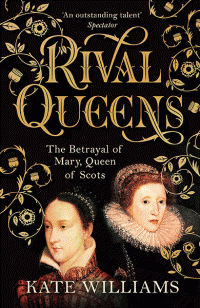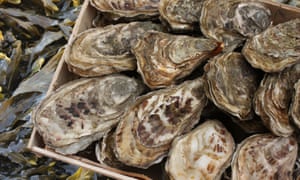via The National Archives Blog by Sally Hughes
When you were little did you play at being a princess? I did and I am sure many still do. The appeal of tiaras and pretty pink frocks is timeless. It was always princesses though, never queens. Did we know even as five year olds that the top job was maybe not all it was cracked up to be? To quote Spiderman (or possibly Voltaire): ‘with great power comes great responsibility’. Queens may get the jewellery and the sycophants but there is also a heavy burden of duty and in some cases danger.

Rival Queens: The Betrayal of Mary, Queen of Scots’ by Kate Williams
Continue reading
==============================
via Interesting Literature
‘We dream—it is good we are dreaming—’ is a lesser-known Emily Dickinson poem which favours the world of dreams over the more painful reality of the waking world. Like many of Emily Dickinson’s greatest poems, the American Civil War may have fed into this vision of a life lived best in the protective arms of dreams, rather than the bloody horrors of reality.
Continue reading
==============================
via Boing Boing by David Pescovitz
When this curious contraption is switched on, an inner circle of white balls appears to be rolling inside the outer circle, but that's actually not the case at all. Below is a video explaining this circular motion illusion. Learn more about the mathematics behind it, specifically Copernicus’ Theorem, and the ingenious hypocycloid mechanical gear design by Girolamo Cardano (1501-1576) over at The Kid Should See This.
==============================
via About History
History and Origin
Katana, the word means “a curved sword with a one-sided blade”. The length of the blade is from 2 to 2.5 shaku (60.6-75.7 cm), the total length with the handle is about 85-105 cm (usually 90-100 cm). If the length of the blade is less than 2 shaku, then this is a short wakizashi sword, and if more than 2.5 shaku, then it is a rolled big katana or tati, but in addition to the size, the Tati traditionally has a greater bend.
Continue reading
==============================
Molluscs not only have tidal and circadian clocks but are attuned to lunar rhythms, experts say
via the Guardian by Nicola Davis

Oysters were most open in the buildup to – and presence of – a new moon. Photograph: nobtis/Getty Images/iStockphoto
The gentle glow of moonlight on water has moved musicians, poets and painters – and, it turns out, molluscs. Researchers have discovered the opening and shutting of oysters’ shells appears to be tied to the lunar cycle.
Biological clocks have intrigued scientists for centuries, and researchers in the field won the 2017 Nobel prize for studies into the 24-hour body clock.
However, organisms do not necessarily have biological processes linked only to the rhythm of day and night, the circadian clock. Other patterns that include links to the tides have been found for species including the horseshoe crab, and to the phases of the moon for creatures including the bristle worm. Some have suggested the latter may also affect humans.
Continue reading
==============================
via Interesting Literature by Dr Oliver Tearle
Poetry and sport may not seen like natural bedfellows, although it’s worth remembering that several poets, including Rudyard Kipling and G. K. Chesterton, to say nothing of Tennyson’s son, were part of the Allahakbarries, J. M. Barrie’s Edwardian cricket team (who were appallingly bad at the sport, but numbered some of the greatest writers of the age). And poets down the ages have put into words the magic and wonder of sport, whether it’s a game of cricket, a football match, or a spot of tennis.
Continue reading
==============================
A new biography, ‘The Man in the Glass House,’ shows why it’s hard to ignore the authoritarian characteristics of some of the architect’s more celebrated work, and why the relationship between aesthetics and morality will forever be fraught
via Arts & Letters Daily: Armin Rosen in the Tablet
Just how much of a Nazi was the most important American architect of the 20th century? Per Mark Lamster’s new The Man in the Glass House: Philip Johnson, Architect of the Modern Century, the answer is nothing short of astonishing, albeit only in the negative sense of the word.
Lamster, the architectural critic for the Dallas Morning News, exhumes every atrocious detail of Johnson’s seven-plus years as a professional fascist. The book is worth reading for anyone interested in architecture, or for that matter in the eternally fraught relationship between aesthetics and morality. It turns out that on the scale of pro-fascist enthusiasm that spans from youthful dalliance to full-blown Charles Lindbergh-type true belief, Johnson, the creator of modernism and postmodernism and someone whose aesthetic philosophy came to define much of the built landscape in which we are all now stuck, belongs decidedly on the Lindbergh end.
Continue reading
==============================
via the Big Think blog by Paul Ratner
NASA research finds a new direction in searching for signs of life in the Universe.
- NASA-funded research says retinal, not chlorophyll, gave the early Earth its color
- The two pigments co-evolved but retinal came first
- We should be looking for retinal-based life throughout the Universe
==============================
via Boing Boing by David Pescovitz

According to the explanation of the phrase "like a moth to the flame" at The Phrase Finder, "the word moth was used the the 17th century to mean someone who was apt to be tempted by something that would lead to their downfall." But why do moths have this fatal attraction anyway? National Geographic explains in the linked video:
Continue reading
==============================
via Interesting Literature
Tennyson would write numerous poems based on Arthurian legend, culminating in his vast blank-verse epic Idylls of the King, although his earlier, shorter (though still substantial) poem ‘Morte d’Arthur’ offers a great way into Tennyson’s Arthurian world and is a good point of departure for an analysis of Tennyson’s engagement with Arthuriana.
Continue reading
No comments:
Post a Comment